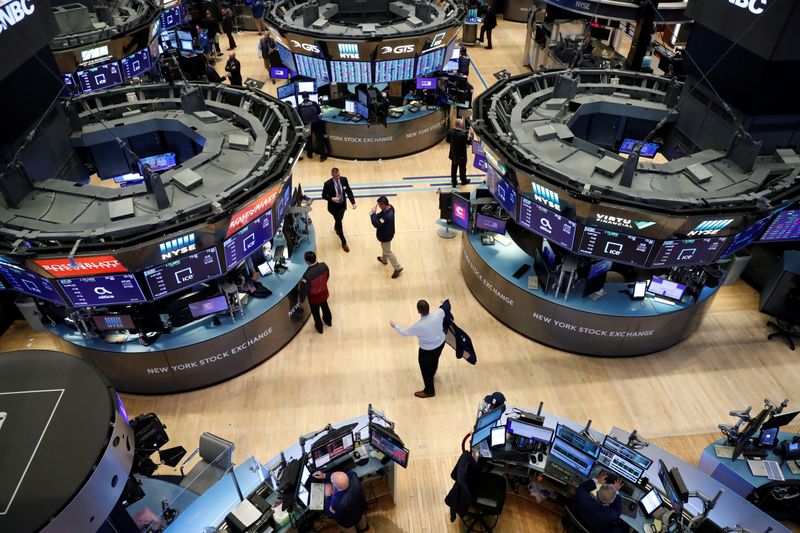By Patturaja Murugaboopathy
(Reuters) - U.S. passive equity funds have started to witness inflows after a two-month hiatus as investors flock to rising equity markets, but prefer shadowing indexes to picking stocks.
Data from fund research firm Refinitiv Lipper showed passive equity funds, which are mutual funds that mirror stock indexes, attracted $860 million in June, after a combined outflow of $24.5 billion in the previous two months.
On the other hand, active funds where fund managers promise selective stock investing to beat index performance, witnessed sharp outflows in every month in the first half of this year.
(Graphic: Flows into active and passive funds, https://fingfx.thomsonreuters.com/gfx/mkt/qmypmgzqbpr/flows1.JPG)
Analysts said June marked a return to the long-term trend, in which passive funds attract a larger proportion of equity investments compared with active funds.
Passive funds outperformed active funds in terms of price returns during 9 of the past 10 years, the data showed. (Graphic: Price performance of active and passive funds, https://fingfx.thomsonreuters.com/gfx/mkt/dgkplxnqjpb/price1.JPG)
"While markets are swiftly recovering from the COVID-induced drawdown, the cash which rushed to the sidelines has a tendency to find its way back into the market in the easiest and most fluid manner possible: passive," said Michael White, portfolio manager at Picton Mahoney Asset Management.
"There is massive pent-up demand and ample liquidity furnished by both monetary and fiscal policy," he said, referring to liquidity from stimulus measures as lockdown restrictions to curb the spread of the new coronavirus are gradually eased.
According to Lipper data, money market funds attracted $988.3 billion in the first half of this year, while equity funds saw an outflow of $171.7 billion.
The demand for passive funds has also been driven by the narrow stock-market rally, with investors favoring well-established large-cap stocks which are already part of the major stock index, analysts said.
The market-cap weighted benchmark S&P 500 index (SPX), which allocates more weighting to the performance of large-cap stocks, has recovered most of its first-quarter losses and is just down 1% for this year.
On the other hand, the equal-weighted S&P 500 index (SPXEW1), which weighs all stock constituents equally, is still down 10% so far this year.
(Graphic: Price performance of equal-weighted and market-cap weighted indexes, https://fingfx.thomsonreuters.com/gfx/mkt/nmopajebdva/comparison1.JPG)
With large-cap stocks boosting indexes, some analysts expect the demand for active funds to flag further in coming months.
"Given the manner that the stock market, and therefore passive funds, have rebounded quickly, it forces investors to question their allegiance to active managers," said Matt Ahrens, chief investment officer at Integrity Advisory.
"The one time these higher-cost managers are supposed to really offer a benefit is when the market is volatile, and many failed to perform."
"Market leaders like Microsoft (NASDAQ:MSFT), Apple (NASDAQ:AAPL), Facebook (NASDAQ:FB) and Amazon (NASDAQ:AMZN) continue to power the market higher, and given their weightings in passive investments, they make it nearly impossible for active managers to keep up. I expect we'll continue to see market inflows to passive investments, especially in stocks."
